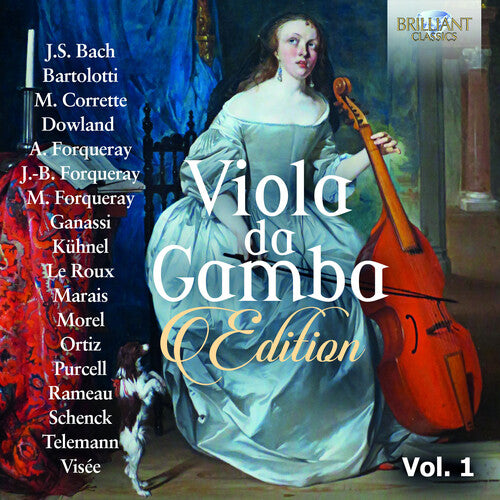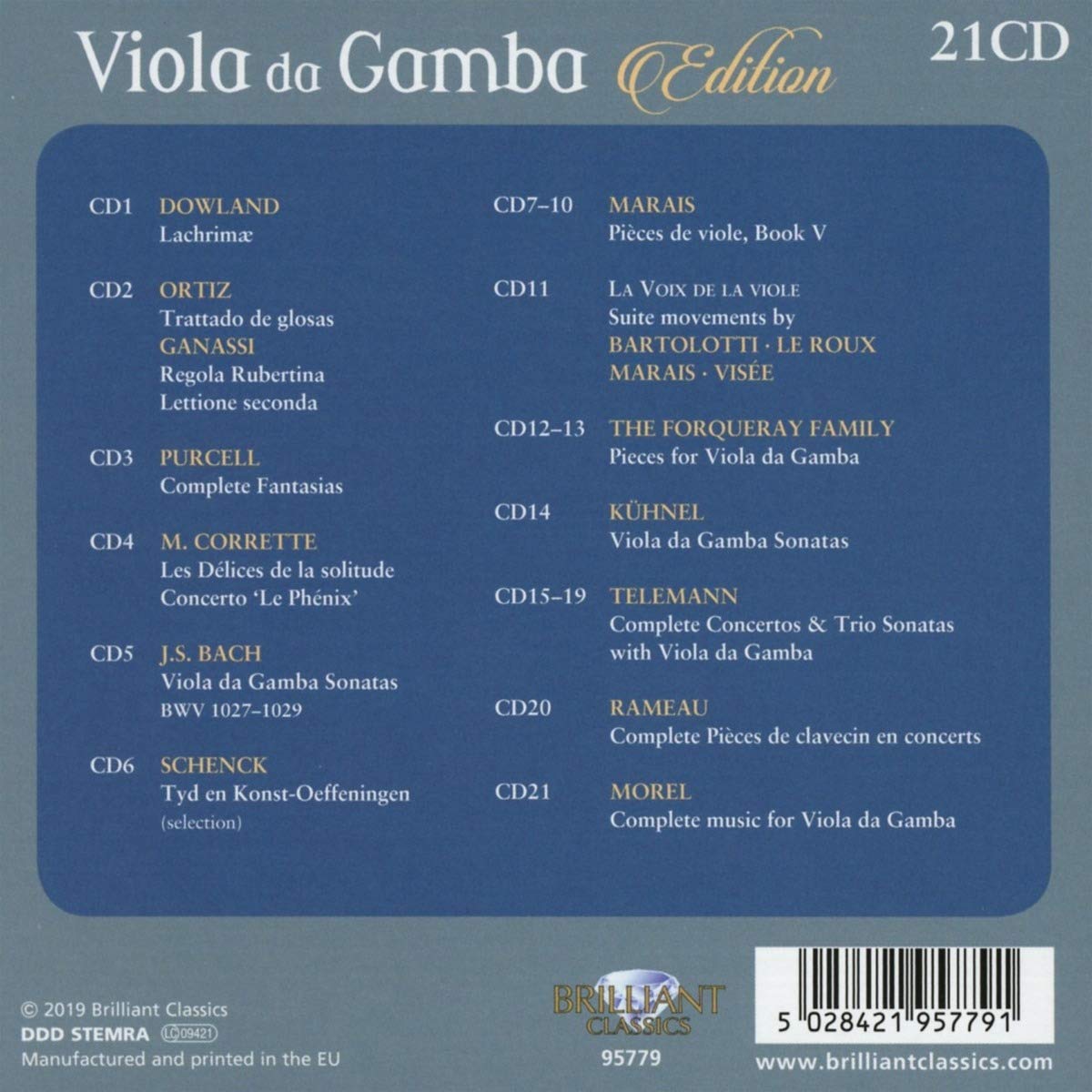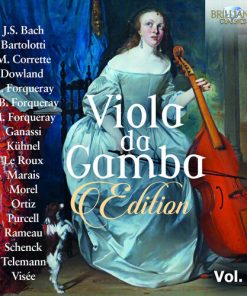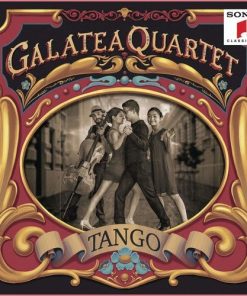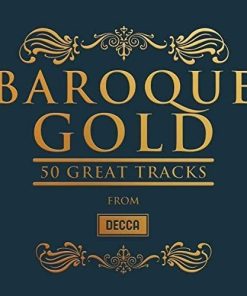VIOLA DA GAMBA EDITION (21 CDs) Brilliant Classics
$ 74,97 $ 37,48

This extensive set celebrates the vast repertoire of viola da gamba music and explores it’s contribution to the European musical landscape. The viola da gamba descends from the medieval fiddle, and the first viol dates from the 15th century. At first it was held sideways, like a guitar, then inspired by the playing style of Arab rebab musicians, Europeans began holding their instruments upright between the legs and thus the viola da gamba, or ‘leg-viol’ was born. For the next three centuries the viola da gamba repertoire flourished and composers throughout Europe were drawn to the instrument because of it’s rich tone and versatile range which allowed for expressive variety. Unique for it’s time, the viola da gamba could act as a solo instrument or in different roles as part of an ensemble; as the melodic lead or bass accompaniment, for example. This set takes us on a whirlwind tour of Europe from the 16th to the 18th centuries and features concertos, chamber music, viol consorts and solo pieces. The set begins in England with the first album dedicated to John Dowland’s work, Lachrimae. Next, we move to Italy, where composers channelled their efforts into writing extroverted concertante music for string ensembles, before touching on treatises by Venetian-born Silvestro Ganassi and Spanish composer Diego Ortiz. Their works represent the earliest collections of music composed exclusively for the gamba. The greatest gamba composers are accorded plenty of space in the set. Marin Marais appears on four albums, three of which are wholly dedicated to the French composer, and certainly anyone who has watched the film Tous les matins du monde will recognize some of the tracks. A different strand of French talent features in the Pieces de viole collection by Antoine Forequeray and his son Jean- Baptiste. Far from the restrained elegance of Marais, the Forequeray’s music delights in passion. Antoine was famous for his dramatic and brash playing style, and the collection is widely accepted to be the most virtuosic in the viola da gamba repertoire. As well as the opportunity to revel in the works of celebrated composers such as J.S. Bach, Purcell and Telemann, the set also showcases the work of lesser-known composers including Johannes Schenck, Angelo Michele Bartolotti and Jacques Morel, whose complete gamba music closes this set.
Fast Shipping and Professional Packing
Due to our longstanding partnership with UPS FedEx DHL and other leading international carriers, we are able to provide a range of shipping options. Our warehouse staff are highly trained to pack your goods exactly according to the specifications that we supply. Your goods will undergo a thorough examination and will be safely packaged prior to being sent out. Everyday we deliver hundreds of packages to our customers from all over the world. This is an indication of our dedication to being the largest online retailer worldwide. Warehouses and distribution centers can be located in Europe as well as the USA.
Orders with more than 1 item are assigned processing periods for each item.
Before shipment, all ordered products will be thoroughly inspected. Today, most orders will be shipped within 48 hours. The estimated delivery time is between 3-7 days.
Returns
The stock is constantly changing. It's not entirely managed by us since we are involved with multiple parties such as the factory and our storage. The actual stock can fluctuate at any time. Please understand it may happen that your order will be out of stock when the order is placed.
Our policy is valid for 30 days. If you haven't received your product within 30 days, we're not able to issue either a return or exchange.
You are able to return a product if it is unused and in the same condition when you received it. It must also still remain in the original packaging.
Related products
COMPACT DISCS
BACH: ST MATTHEW PASSION – RUBENS, COLLEGIUM VOCALE, HERREWEGHE (3 CDS) HARMONIA MUNDI
COMPACT DISCS
COMPACT DISCS
COMPACT DISCS
COMPACT DISCS
ADAMS: DR ATOMIC SYMPHONY; GUIDE TO STRANGE PLACES – ST. LOUIS SYMPHONY, DAVID ROBERTSON NONESUCH
COMPACT DISCS
COMPACT DISCS
COMPACT DISCS
COMPACT DISCS
COMPACT DISCS
BEETHOVEN & BERG: VIOLIN CONCERTOS – ISABELLE FAUST, ORCHESTRA MOZART, CLAUDIO ABBADO HARMONIA MUNDI
